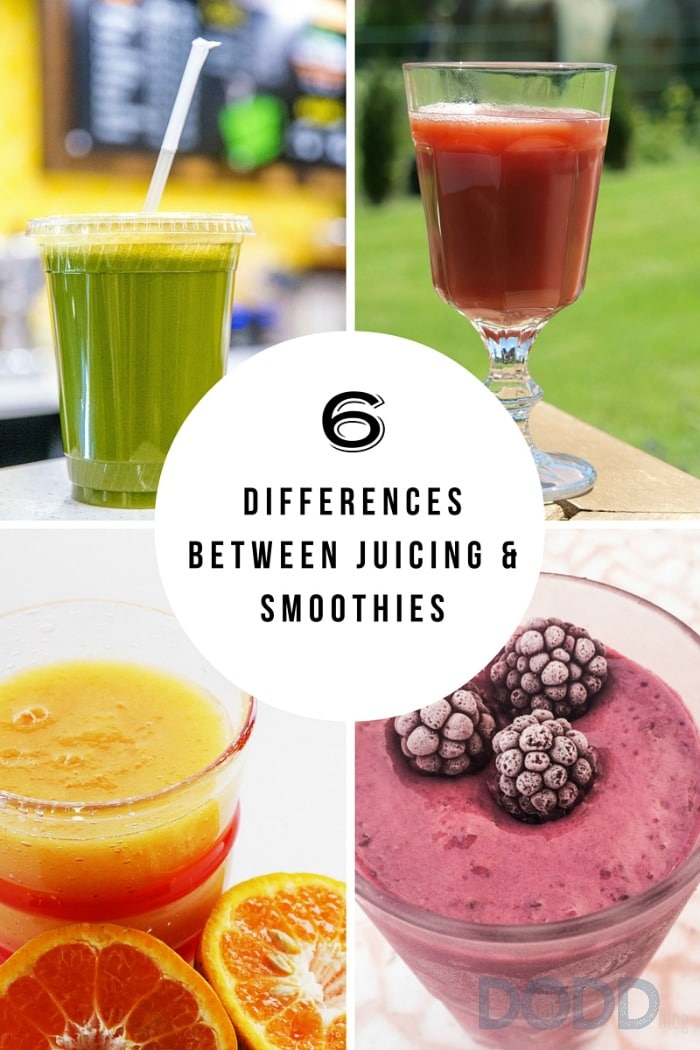Two popular fruit and veggie drinks that are very similar are smoothies and juices. They do some subtle differences, though. Juices contain only fruit and veggie juices, while smoothies consist of finely chopped pieces of vegetables and/or fruit. Smoothies can also contain other ingredients, while juices are purely fruits and vegetables with the pulp removed. Their differences in how they are made leave smoothies quite bulky in consistency and juices much smoother. I found some differences between juicing and smoothies which we will look at below:

Six Differences Between Juicing And Smoothies:
1.Calorie Content
Generally speaking, juices contain more calories per glass than smoothes since the juicing process removes the zero calorie fiber. For those who only put fruits in their juice, that can mean quite a calorie count because fruit juices can contain more calories than a can of soda. You can reduce the total calories in your juice by alot if you add a good portion of veggies.
Also, as I mentioned above, the choice for lower calories would be a smoothie since they do contain zero calorie fiber and a large portion of ice. However, if you are adding ingredients like nuts, seeds, and yogurt, the calorie count can be just as much as a juice or more.
2. Expense
Blenders are usually less expensive than juiceers to buy. You will also need less fruits and vegetables to make a glass of smoothie compared to what you would have to purchase to make a glass of juice. As far as cost goes, smoothies are cheaper to make.
3. Nutrition
Juices and smoothies both have benefits when it comes to how much nutrition they provide. Smoothies contain fiber, while juices do not. Fiber in itself is beneficial to the body; helping improve bowel function, blood glucose control and reducing the risk of chronic disease, however the lack of it allows your body to absorb minerals, phytonutrients and vitamins more efficiently. Vegetable juices are generally thought to taste better than vegetable smoothies, so you could enjoy a much wider range of veggie nutrients by juicing them as opposed to creating smoothies with them. Then again, you can add all sorts of things to a smoothie that contain protein and healthy fats to boost their nutritional value and make them taste better.
4. Water Content
As far as better hydration, juicing is a much better choice as the pulp is removed. Smoothies still contain plenty of water – usually from the ice that you make them with – but juicing gives you more water content. Both of them do a great job of quenching your thirst.
5. Time Investment
It takes less time to prepare a smoothie than it does to juice. Blenders also clean up much faster than juicers. As for the time it takes to drink them, though, juices take much less time to drink since smoothies are so much thicker.
6. Taste
This is entirely decided upon by the one who will be drinking the beverage. Generally, though, juices are much more concentrated taste-wise than smoothies and are less filling. Smoothies, on the other hand, are much bulkier, with a less distinct flavor and can be very filling.
